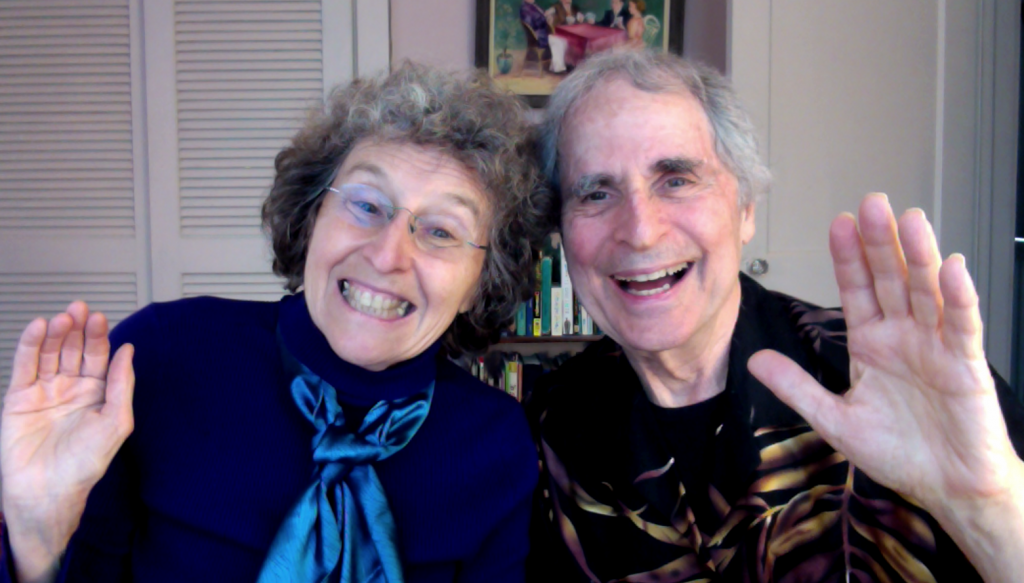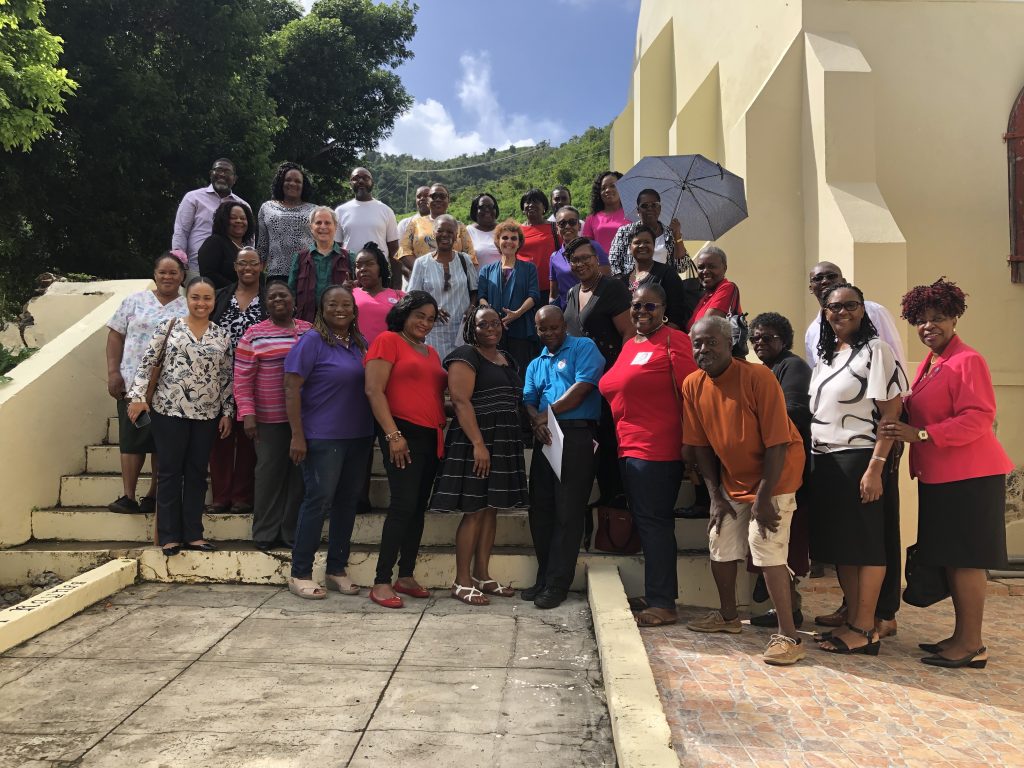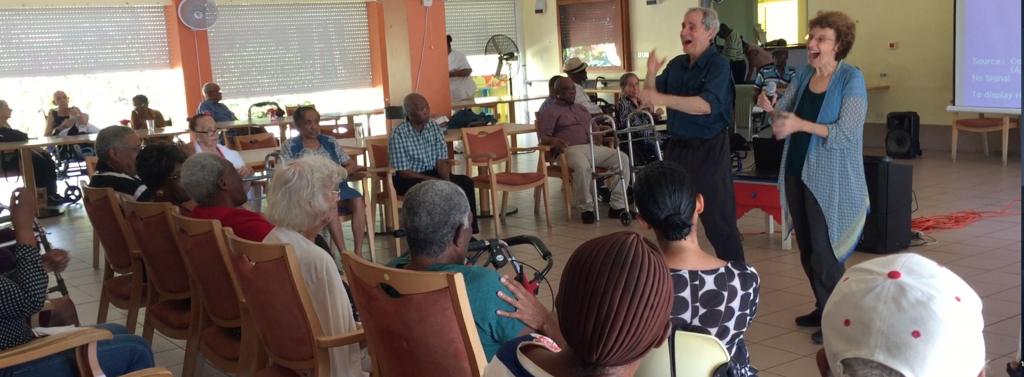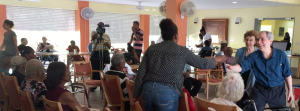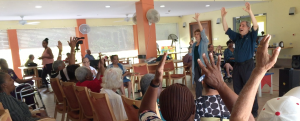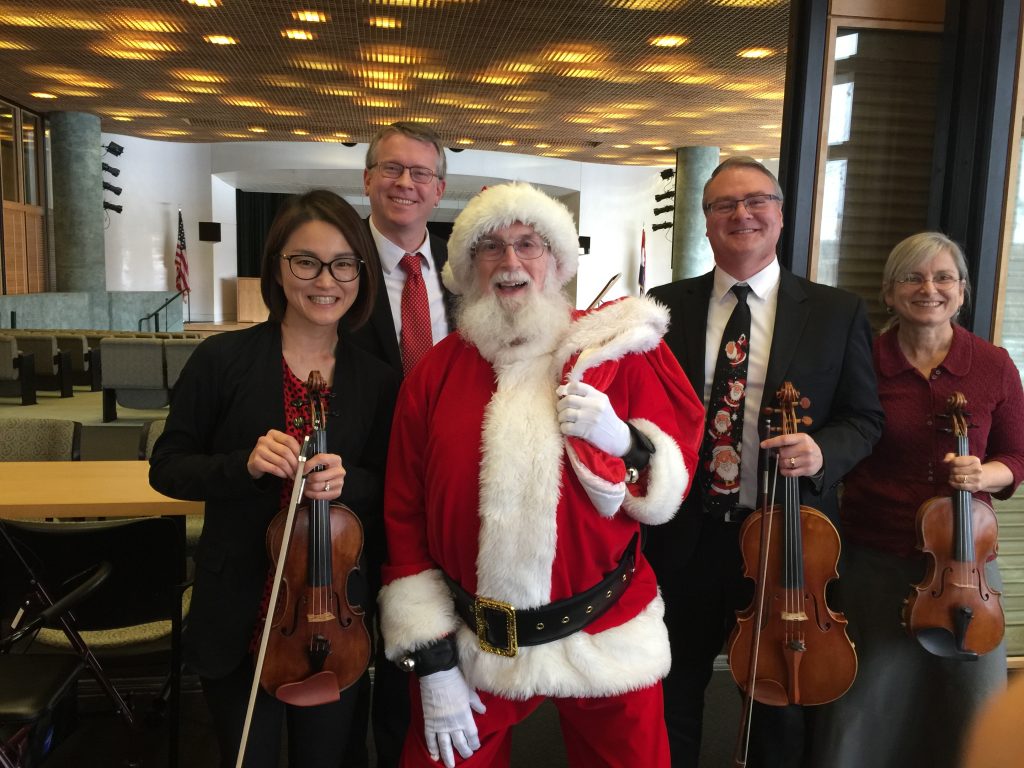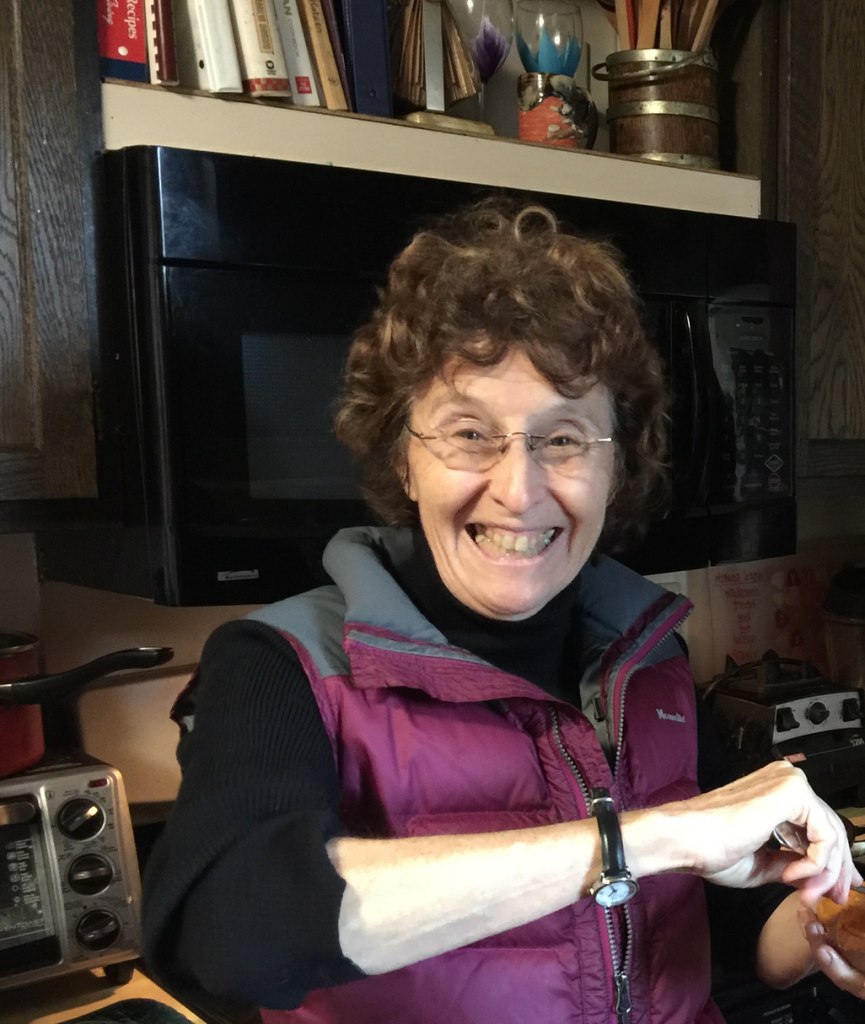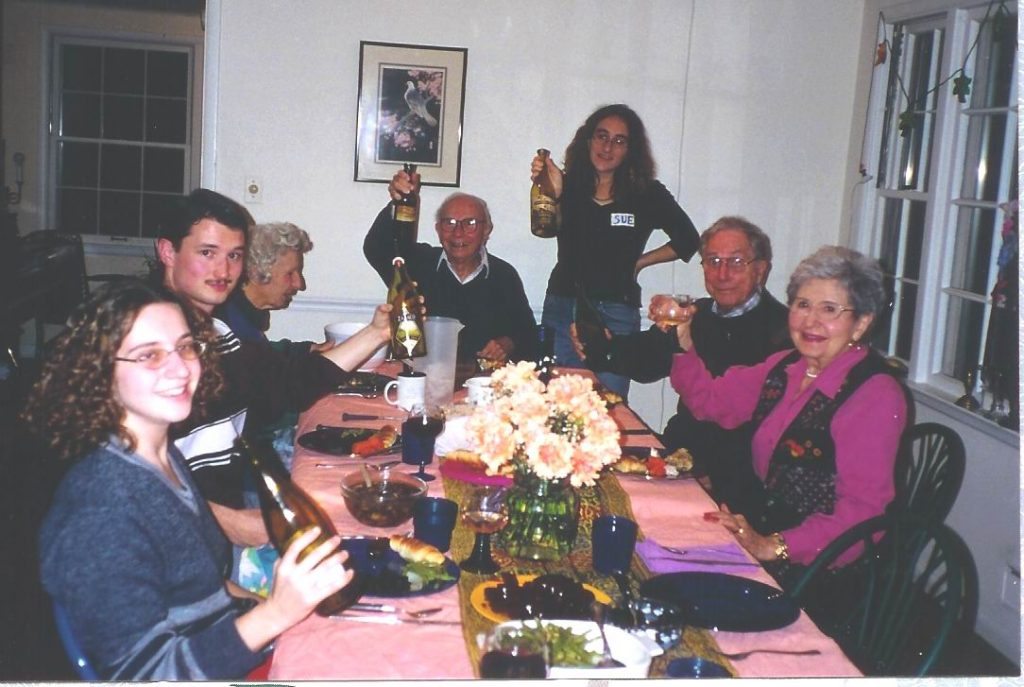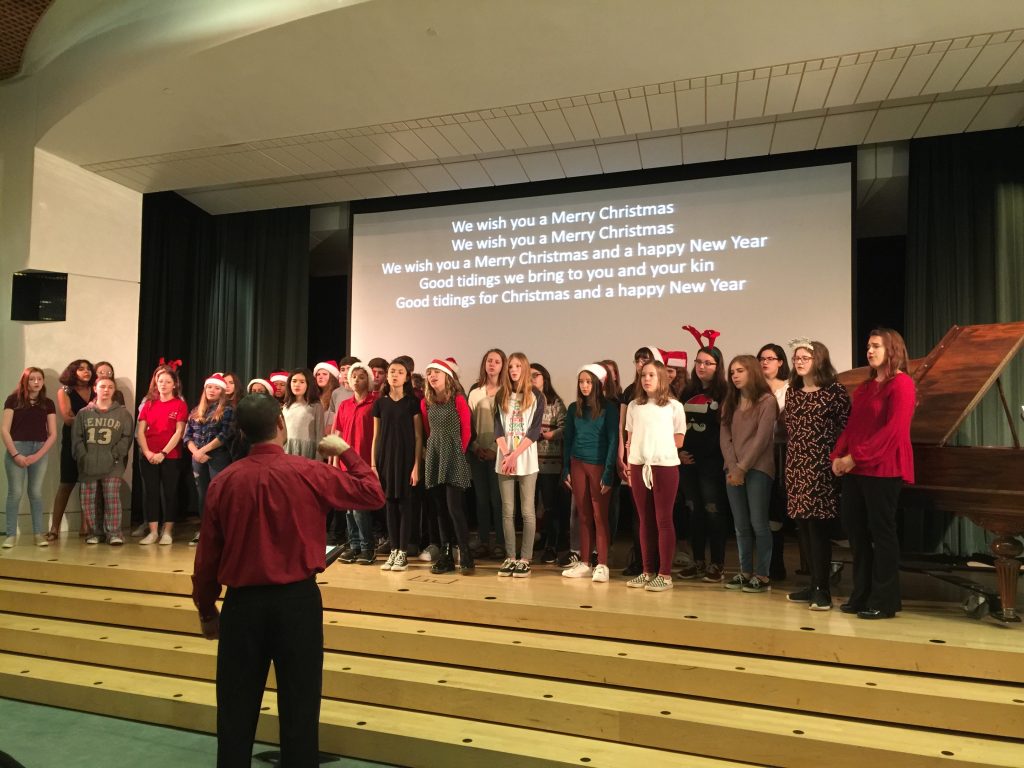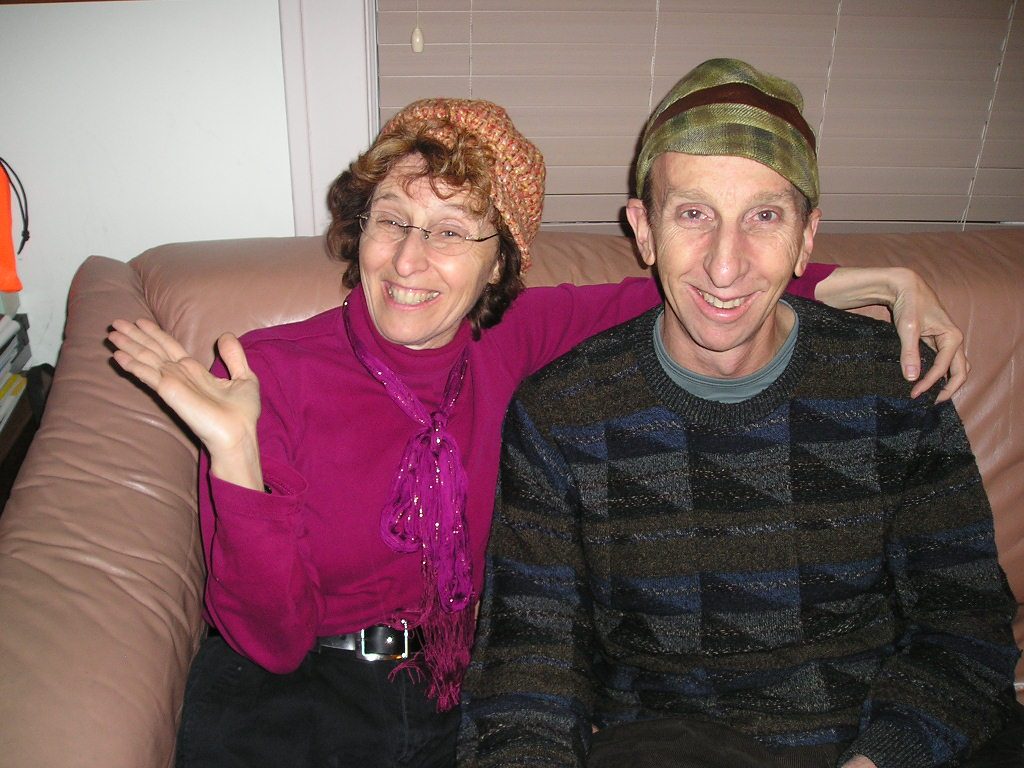Posts by deborahshousewrites
Come Laugh with Us: A Free Virtual Dementia-Friendly Experience
Laughter is an instant vacation. Milton Berle
Let’s have a staycation and laugh together. Please join us April 6, Tuesday afternoon at 1:00 Central Time, 2:00 Eastern, for our next laughter session.
You’ll boost your immune system, lift your spirits, and get a nice little workout. Plus, you’ll meet a great group of people and have fun! Please laugh with us every other Tuesday afternoon at 1:00 Central Time, 2:00 Eastern time.
We designed our free 30-40 minute interactive sessions for people who are living with dementia. All are welcome, including care partners, family members, and friends. It’s great fun and a good energy and mood booster.
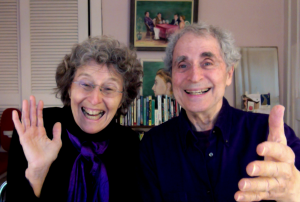
Presenting to Care Partners in Tortola: The Power of One Person to Make a Difference
The founding of the Virgin Islands Alzheimer’s Association in Tortola, BVI, is about the power of one person to make a difference. It started at a Rotary Club meeting in 2013 when a fellow Rotarian confided in Edna Williams, “I have been diagnosed with Alzheimer’s.”
He told her how hard it was to find support and resources. Edna felt compassion for her friend and others in his situation. As a trained social services worker, human resources consultant, and woman of action, she went to work to remedy the situation. The results: a vibrant Association recognized by Alzheimer’s Disease International. The Association and its many volunteers serve as advocates for people who are living with dementia and their friends and families.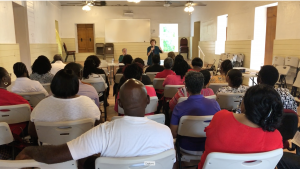
We were honored to spend time with Edna and to share our presentation with a group of family and professional care partners, social workers, and community and spiritual leaders. As we talked about the strength of music to keep us connected, Dawn, the daughter of Edna’s Rotarian colleague, the man who had inspired the founding of the Association, stepped forward to tell us her own story.
For several years, her father had been listless and withdrawn, seldom showing interest in anything. She mourned his father’s dynamic personality and tried many things to lift his spirits and pique his interest. Then she came upon a favorite song of his from years back, a lively tune with a Latin beat.
“When I played that song for him,” she told us, “he came to life. His eyes brightened and he began to mouth, then sing the words. He leaned forward in his chair, wanting to get up and move. It was such a meaningful transformation. The music connected with him and that helped him connect with us.”
Her touching story was a reminder that arts and creativity can go beyond the rational mind and the spoken word and awaken our hearts and spirits.
As we shared ideas for staying connected with each other, regardless of our abilities, our own hearts and spirits were expanded by our time with Edna and her group. It’s wonderful to live in a place of breathtaking beauty. It’s even greater to live in a community where people reach out to help and support their neighbors.
Five Ways to Make Valentine’s Day Special for a Loved One Living with Dementia
My parents liked to celebrate Valentine’s Day with dinner and dancing. Years into my mom’s Alzheimer’s journey, my parents’ love hadn’t diminished, but my mom’s capacity for going out to dinner and dancing had drastically decreased. I saw how blue my father was—one more event he had to give up, one more change in the woman he loved—and I searched for alternatives that might cheer him up. Here are five ways to make Valentine’s Day special.
Look for a favorite thing. Seek one simple pleasure your loved one might enjoy. Mom loved potato soup and chocolate and fresh strawberries. These were part of our celebration.
Nurture yourself: include your own favorite thing. Bring yourself into the celebration and include something that makes you happy. I brought foods my father and I both liked as part of our little party.
Pick several ways to express your love. Poetry, music, gifts, flowers, and photo albums—you can use any of these resources as a catalyst to talk about your feelings. Dad and I sang Mom old show tunes and love songs, music she really enjoyed. Mom adored Shakespeare; we had a couple of sonnets on hand. She and Dad had once created a beautiful flower garden; Dad brought her a single red rose.
Take joy in the simple act of expressing yourself. Being with my mom was a chance to really practice the mythical “unconditional love.” Mom couldn’t tell me she loved me. During one Valentine’s Day celebration, she fell asleep while I was holding her hand and talking sweetly to her. But there was a comfort in expressing my love and I kept on talking.
Celebrate love in all its glorious guises. During their long marriage, my father had walked into a room millions of times and often, Mom had been busy and hadn’t particularly smiled or remarked. But with her dementia came a deep dependency on Dad. When Dad walked into a room, my mother’s face lit up. My father basked in that light. The sparkle in my mother’s eyes was the new, “I love you, darling.” The light said everything my mother could no longer say.
Deborah Shouse is the author of Connecting in the Land of Dementia: Creative Activities to Explore Together and Love in the Land of Dementia: Finding Hope in the Caregiver’s Journey.
Presenting to Community Members in the St. Martin’s Home, Along with Powerhouse Performer Raymond Jessurun
We knew that Raymond Jessurun was an amazing leader, organizer, and dementia advocate from our previous work with him in Philipsburg, St. Maarten. But we had no idea what a powerhouse performer he was until recently, when we presented with him at the island’s White and Yellow Cross Care Foundation.
On our way to the event, Raymond told us, “We have a mixture of people coming together, people from all over the world, people of varying abilities. We want to invite joy into their lives. We want everyone to connect and have fun together.”Ron and I loved the idea and focused on music and laughter as a common pathway. When we arrived at the care center, which is managed by the White and Yellow Cross Care Foundation, the community area was filled with light: the windows opened to the temperate breeze and lush outdoors. Indoors, in a large and cheerful room, people gathered in a semi-circle. Some had lived in Philipsburg all their lives. Others had relocated from other islands or countries, including Holland, Curaçao, St. Kitts, and Guyana.Raymond opened our session by telling everyone, “I want you to teach Deborah and Ron something about yourselves and about our country.”We all shared specific songs that reminded us of our families. Raymond jazzed us up by sliding into the center of the circle with a rousing a cappella rendition of Come on Let’s Twist Again. After a few bars, people were dancing in their seats. We kept the movement going as we conducted When the Saints Come Marching In, first in a stately tempo, then fast. We talked about the times of the day we liked to sing. Several of the care staff said they liked to sing throughout the day. One woman enjoyed singing in the afternoons. Another sang a poignant favorite of hers, about how she longed for someone to hold at night. She received a heartfelt round of applause.As part of our interaction about music and movement, we showed a video of Drum Safari engaging everyone in percussive activity during one of our KC Memory Cafes. We ended our session by giggling our way through some Laughter Yoga exercises, including drinking a delicious, no-cal, laughter milkshake.As a final treat, everyone serenaded us with a traditional national song, O Sweet Saint Maarten Land. (Link: https://www.youtube.com/watch?v=41capjzf7iQ) The ending stanza captures a taste of this beautiful country, but fails to mention its amazing people:“Oh I love thy Paradise,Nature beauty fairly nice,Oh I love thy Paradise,Nature beauty fairly nice.”
Presenting to Care Partners in St. Thomas
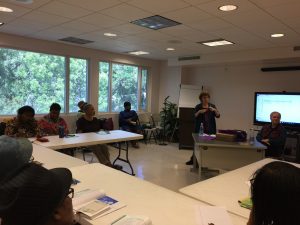 Listening to favorite songs. Singing. Conducting an imaginary orchestra. Looking at art. Cooking and baking. Laughing. These are just a few of the topics we discussed when presenting to care partners in St. Thomas.
Listening to favorite songs. Singing. Conducting an imaginary orchestra. Looking at art. Cooking and baking. Laughing. These are just a few of the topics we discussed when presenting to care partners in St. Thomas.
Recently we gathered with professional and family care partners, along with friends and advocates, to share ideas for staying connected through the dementia and care partners’ journey.
Everyone lit up as we all thought of favorite songs that carried positive memories. These “personal playlist” songs are the foundation of the internationally acclaimed Music & Memory program (https://musicandmemory.org) developed by Dan Cohen and beautifully documented in the movie Alive Inside. As we moved on to singing, one woman described how her mother still knew all the words to her favorite hymns. Another attendee, who had a daughter with special needs, described how singing allowed her daughter to find and keep her voice. Maestro David Dworkin would have relished the zest with which our group practiced his dynamic Conductorcize program. We sang the melody to When the Saints Come Marching In, and conducted away, raising our arms, our voices, and almost, the roof.
“What about cooking and baking?” one woman asked. “How can my mother continue her passion for those when she can no longer use the stove?”
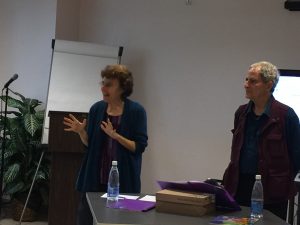 Ron and I both identified with that question, as our moms had been avid bakers. We talked about a variety of ways to stay safely engaged in creating food, including setting up a quiet table just outside the kitchen for making dishes together. We discussed the joys of measuring, blending, chopping, and stirring, while carrying on a companionable conversation. Making fruit and vegetable salads, snapping green beans, icing cupcakes, making cookies serve as a few delicious examples. There are so many ways we can adapt hobbies and add in creativity and the arts so all of us can live with meaning and purpose. ###
Ron and I both identified with that question, as our moms had been avid bakers. We talked about a variety of ways to stay safely engaged in creating food, including setting up a quiet table just outside the kitchen for making dishes together. We discussed the joys of measuring, blending, chopping, and stirring, while carrying on a companionable conversation. Making fruit and vegetable salads, snapping green beans, icing cupcakes, making cookies serve as a few delicious examples. There are so many ways we can adapt hobbies and add in creativity and the arts so all of us can live with meaning and purpose. ###
Many thanks to Arleen Evans O’Reilly, Sandra Bradley, and their team for hosting us. And thanks to Sandra Bradley for taking the photos.
Deborah Shouse is the author of Connecting in the Land of Dementia: Creative Activities to Explore Together and Love in the Land of Dementia: Finding Hope in the Caregiver’s Journey.
Singing in the Season with the Kansas City Symphony at the KC Memory Cafe
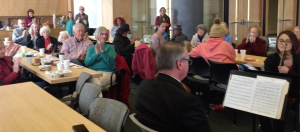 We were already in a holiday mood. A layer of sparkling snow blanketed Kansas City. Our generous neighbors at Cosentino’s Market in Brookside donated fresh-baked sugar cookies, colorful frostings, and cheerful sprinkles so our guests could decorate their own holiday cookies. Now we were ready for singing in the season with the Kansas City Symphony at the KC Memory Cafe.
We were already in a holiday mood. A layer of sparkling snow blanketed Kansas City. Our generous neighbors at Cosentino’s Market in Brookside donated fresh-baked sugar cookies, colorful frostings, and cheerful sprinkles so our guests could decorate their own holiday cookies. Now we were ready for singing in the season with the Kansas City Symphony at the KC Memory Cafe. 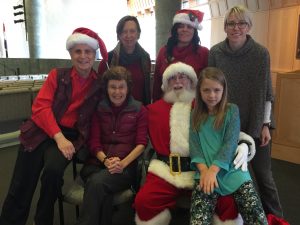 As the musicians launched into Jingle Bells, we heard an extra jingling. It was our own Santa Claus, bringing us his jolly “Ho, ho, ho’s” and a bag of Christmas cheer. We all sang, “We Wish You A Merry Christmas,” celebrated our musicians, and had our photos taken with Santa. We left humming and hopeful.#
As the musicians launched into Jingle Bells, we heard an extra jingling. It was our own Santa Claus, bringing us his jolly “Ho, ho, ho’s” and a bag of Christmas cheer. We all sang, “We Wish You A Merry Christmas,” celebrated our musicians, and had our photos taken with Santa. We left humming and hopeful.#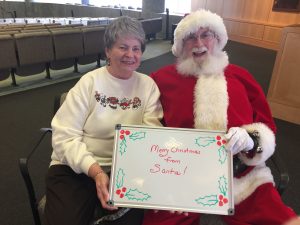 Thanks to the KC Symphony for the amazing gift of music. Thanks to Cosentino’s Market for the delicious treats. And thanks to our attendees, our Dementia Friendly partners, and our amazing community volunteers.
Thanks to the KC Symphony for the amazing gift of music. Thanks to Cosentino’s Market for the delicious treats. And thanks to our attendees, our Dementia Friendly partners, and our amazing community volunteers. The Ways the Cookies Crumble
Each woman would bring a batch of home-baked cookies, she wrote. We would then get to sample all the cookies and bring a bag of treats home to our families. I adored the idea of getting to bring my teenage daughters such an array of home-baked sweets. I envisioned a room filled with charming baskets of star-shaped sugar cookies, generously topped with red or green frosting. I imagined a jolly basket of Santa cookies and a fragrant ginger-scented array of reindeer cookies. I fantasized about thumbprint cookies, shaped like snowflakes and gooey with jam, and about silky buttery sandies melting in my mouth. And…
Then I realized the implication; these holiday cookies would not only need to be beautiful, creative, and delicious, they would need to be presented in festive and unusual ways. I had never really made anything other than the occasional clumpy chocolate chip, peanut butter, or oatmeal cookie. Why hadn’t my mother been a more glamorous baker, I fretted, as I rummaged in the refrigerator for something to make for dinner. She only made the plainest of cookies—date crumbs, peanut butter, and chocolate chip. As I boiled water for pasta and heated up the jar of marinara sauce, a number floated into my head and I dialed it.
“If I go to this party, will you help me with a recipe and a cute idea for presenting the cookies?” I asked my friend Judith, who was graced with five-star baking abilities.
“Of course,” she said. Judith’s aplomb would fit right in at such a gathering. Briefly, I wondered if she could attend in my place and just deliver my treats to me.
I told my daughters the good news—in several weeks we would have our own private holiday cookie festival. Since our sweets were usually made by some giant corporate entity, they were ultra-excited.
A week later, I received a thick packet in the mail. Judith had selected a number of “easy” recipes for me. I smiled as I looked over the pictures of adorable cookies with a cute holiday twist.
I frowned as I read through the baking instructions; each cookie demanded its own specialized pan, gourmet tool, thermometer, or esoteric ingredient.
As the day of the cookie party neared, I had no recipe, no cookies, no plan, and nothing good to wear.
That night at dinner, I said, “I don’t think I can go to the party.”
“Why not?” Sarah said sharply. She was thirteen and took promises and plans very seriously. Plus, she had a highly sophisticated taste for sweets and was looking forward to expanding her repertoire.
“I can’t just walk in carrying a paltry tray of blobby looking chocolate chip cookies.” My throat constricted and I wished I were a mother who could whip up a butterscotch soufflé from ingredients that just happened to be in my kitchen cabinets.
“Why not?” my older daughter Jessica said. Even during the holiday season, she kept to her black-themed wardrobe. She looked Gothic and serious as she said, “Everyone else will be all silver bells and fancy sprinkles. You will represent the good old- fashioned approach to the holidays; your simplicity will be refreshing.”
I took a breath and considered her words. If worse came to worse, I could always pretend I never saw those cookies before in my life.
That evening, my daughters and I made chocolate chip cookies and put them in a tin lined with aluminum foil. In honor of the season, I unearthed a shiny red bow to top the tin.
Walking into the party was like walking into a fairyland. Christmas lights lined the windows and a sparkling tree spread its branches into the living room. The dining room table looked like the December cover of Gourmet magazine. Stars, hearts, Christmas trees, snowmen, all the icons of the season were glowing with icing and sprinkles.
Some cookies were nestled in hand-made wreathes. Others shone from star-shaped or tree shaped boxes. A miniature set of reindeer surrounded a bejeweled fruitcake. A galaxy of colorful star-shaped cookies decorated a tiered silver-server. I admired each display while looking for a quiet corner where I could tuck in my tin of chocolate chips. I finally settled them between candy cane cookies and gingerbread Santas.
My hostess offered me champagne and the conversation flowed. Then she announced, “It’s time to gather the cookies.” She had a large silver gift sack for each of us and encouraged us to take several of each cookie. As I toured the table, I sneaked a look at my humble confection. What if no one took any? What if I had to bring the whole batch home? What if… The doubts daunted me as I filled my sack with delectables.
“Who made the chocolate chip cookies?” someone asked. The room quieted and my breath quickened. As the silence spread, I finally said, “I did.”
“What an interesting idea,” someone said.
“I never would have thought of it. It’s comforting. These cookies remind me of my mother and home.”
I smiled as I put three Santas in my sack and headed for the reindeer.
That evening my daughters and I had a magnificent holiday feast, consisting of cookies, cookies, and cookies.
“Here’s the strange thing, Mom,” Jessica said, as she leaned back, sated. “Your cookies are really just as good as any of them. Not as cute, but just as delicious.”
“More delicious,” Sarah said.
I smiled, thinking that about my mom’s cookies when I was growing up. Maybe there was something about the plain old recipes offered in the plain old way, so sturdy, so unglamorous, and yet so deliciously like coming home.
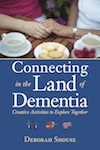
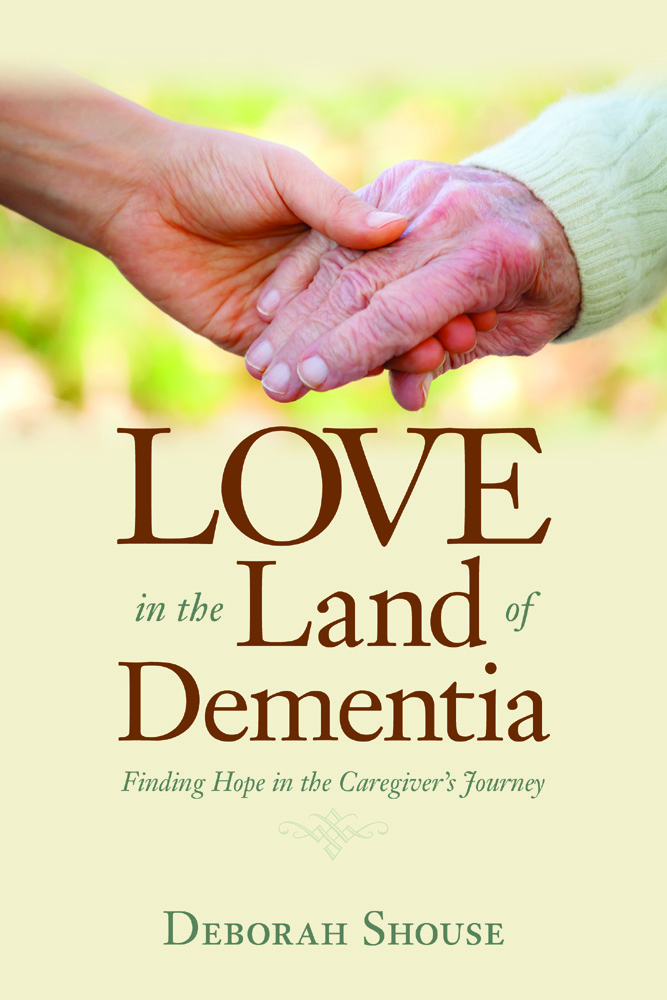
Seven Secrets of Dementia Inclusive Holiday Cooking
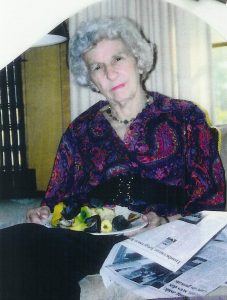 “Who prepared this delicious meal?” a friend asked during a holiday dinner.
“Who prepared this delicious meal?” a friend asked during a holiday dinner.I named my brother Dan, our head chef, first. Then I included the support team—myself, my mom, my daughters and nephews.
“Did I help?” Mom whispered as I passed her the mashed potatoes.
“You sure did,” I told her. ”You mashed the potatoes, put the marshmallows on the sweet potato casserole, and mixed the fruit salad.”
“That’s good,” she said. “I like to help.”
Our desire to help and contribute to seasonal celebrations doesn’t end with a diagnosis of dementia. It’s lovely to linger in the kitchen together, preparing food for the holidays. It’s even lovelier when you can adapt and enjoy dementia inclusive holiday cooking so that people of varying abilities can participate.
Rebecca Katz, author of The Healthy Mind Cookbook, sees food as a great equalizer, something anyone can enjoy regardless of abilities. Fixing a delicacy for someone offers a tangible and delicious way to give back.
Here are six secrets of dementia Inclusive holiday cooking.
- Leaf through a favorite family cookbook or recipe box and use the pictures and recipes as a catalyst for conversation. Ask open-ended questions, such as, ”What does that brownie recipe make you think of?” “What do you like about the holiday season?”
- Chose a time of day when you’re both rested.
- Create a comfortable kitchen environment, by playing familiar seasonal songs you can both hum or sing along to.
- Reduce extraneous noise and distractions, such as a television in the background.
- If you wish, take photos during the experience. That way, you can relive the adventure and share with family and friends.
- Indulge in instant gratification, if possible, by sampling your work when the cooking is complete.
- Even if the person living with dementia can’t help prepare food, he can still enjoy sitting in on the action and the conversation.
Whether you’re stirring a pot of orzo or dropping mint leaves into cool water, enjoy your time of creation and connection in the kitchen.
A longer version of this piece originally appeared on Joan Lunden’s excellent website: Enjoy Dementia Inclusive Holiday Cooking. Thanks to Sue Fitzsimmons, MS, ARNP, Judith Fertig, author of The Memory of Lemon, Kate Pierce, LMSW, Alzheimer’s Association Greater Michigan Chapter, and Rebecca Katz, author of The Healthy Mind Cookbook
Deborah Shouse is the author of Connecting in the Land of Dementia: Creative Activities to Explore Together and Love in the Land of Dementia: Finding Hope in the Caregiver’s Journey.
KC Movies & Memories’ New Focus on Musicals: Oh What a Beautiful White Christmas
First we get people’s toes tapping and hands clapping with live musical performances from some of Kansas City’s great musicians. Then KC Movies & Memories’ new focus on beloved movie musicals keeps our audience engaged and connected. This is a lively, intergenerational experience that families can easily replicate. Please see our invitation below.
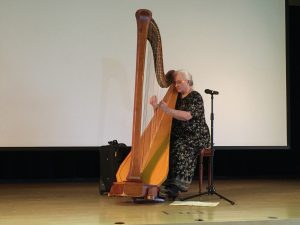 Our November program delighted guests with an eclectic array of harp music, performed by Juli Sackman. We followed that with the story of the award-winning movie Oklahoma, punctuated by lively song and dance numbers. Here is the link to that experience.
Our November program delighted guests with an eclectic array of harp music, performed by Juli Sackman. We followed that with the story of the award-winning movie Oklahoma, punctuated by lively song and dance numbers. Here is the link to that experience.
https://www.youtube.com/watch?v=56FbaPmCIbQ&feature=youtu.be
In December, we were wowed by Indian Hills Middle School eighth grade choir. They entertained us with intricate renditions of holiday tunes. Then, Jim Poplau, manager of the Waldo Library, shared one of his favorite holiday films, White Christmas. Watching the 1954 trailer of the film, in Vista-Vision, reminded many of the rare childhood treat of attending the cinema. Jim regaled us with the complicated plot of the film and shared some of the beloved songs, including Sisters, Count Your Blessings and of course White Christmas, which we all sang along with.
Here’s a link to that experience:
https://www.youtube.com/watch?v=jN2p3vw3jyI&t=13s
Invitation: If you’d like to add some musical movie offerings to your holiday gathering, simply email us at creativity@pobox.com and we’ll send you a PDF 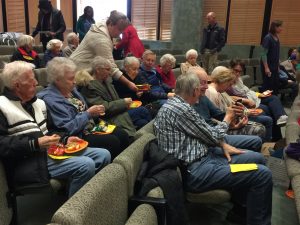 featuring YouTube song clips and scripts you can modify for your family. These Movies-in-a Minute are courtesy of the Kansas City Public Library and The Creativity Connection.
featuring YouTube song clips and scripts you can modify for your family. These Movies-in-a Minute are courtesy of the Kansas City Public Library and The Creativity Connection.
Here’s to a lovely and meaningful holiday season.
What we look for in our dementia-friendly films.
- Uplifting content
- A straightforward narrative that’s easy to follow.
- A subject matter that people might identify with
- No violence and a minimum of startling or loud noises
- No subtitles or complicated foreign accents
- Familiar or soothing music
Please join us for our Holiday Memory Cafe…

Deborah Shouse is the author of Connecting in the Land of Dementia: Creative Activities to Explore Together and Love in the Land of Dementia: Finding Hope in the Caregiver’s Journey.
A Thanksgiving Love Story: Bringing Home the Gravy
Thanksgiving changed the year I went vegetarian. I did not mind giving up the tender, moist turkey or the savory oyster-specked stuffing. But giving up the flavorful flow of mushroom-laden gravy was quite another thing. I watched enviously as my family ladled the luscious liquids over their mashed potatoes, turkey and stuffing. As I nibbled dryly on my carrots, green beans and salad, my lower lip protruded. I felt left out and deprived.
My brother, Dan, ever alert to the pouting big sister, came up with a solution.
“Next year I will make special vegetarian gravy just for you,” Dan promised.
Years later, that special vegetarian gravy has become one of my favorite Thanksgiving rituals. I begin fantasizing about it the moment the autumn leaves turn crimson. I know that in mere weeks, my brother and his family will arrive and I will have my yearly boost of family and feasting, highlighted by gravy.
When my brother calls to tell me his travel plans, I write his arrival time and GRAVY on my calendar. The night he comes to town, we make the shopping list together, avidly discussing how many pounds of mushrooms we need for both the carnivore and vegetarian pots of gravy. I relish the early-Wednesday morning trip through the grocery store, where Dan and I and our children carefully select the foods we will be making the next day. We linger in the produce aisle, filling several sacks with gleaming white mushrooms and buying rustling yellow onions.
On Thanksgiving Day, Dan and I and other family members spend long, luxurious hours cooking. Dan mans the stove and I manage the slicing and chopping. Together we snap, peal, slice and dice the vegetables that will accessorize the turkey. I take special pleasure in wiping clean and slicing the mushrooms, then bringing my brother the brimming bowlful. When he has nodded his approval, I get out the old copper pot I bought in Germany in the early seventies. This year, Dan is improving his already amazing gravy. With his new immersion blender, he creates a rich base of caramelized onions, whose flavor surpasses that of the lowly vegetable cube. He adds in a little flour, then gentles the mushrooms into the onion broth. When the pot is bubbling with thickening nectar, he says, “Taste this and see what you think.”
I always think the same thing—“Wow, this is great.”
We are in a state of giddy and satisfied exhaustion by the time our guests arrive. We share grateful prayers with everyone and lay out the feast, including plenty of turkey-based gravy for the rest of the family.
Then comes the moment I have been waiting for: I sit down, my own personal pot of gravy poised by my plate. I cover the mashed potatoes, carrots, green beans, and salad with the aromatic concoction and I savor every bite. But more importantly, I savor the bounty, creativity, and love that have gone into this simple dish. Through this gravy, my brother speaks with his hands and his heart, saying: “I care about you and I am going to make sure you are not left out and that you have something fantastic to eat.”
For that and so much more, I am thankful.
…………
And now, if you’d like to create a Thanksgiving love story, bring home this delicious gravy.
Dan Barnett’s Chicago Style Never-Enough-Mushroom Vegetarian Gravy
Ingredients
2 large onions (chopped)
2 pounds (or more) white button mushrooms sliced (can add some portabellas for enhanced flavor)
1 cup of white wine (of lesser quality)
Salt & pepper to taste
2 tablespoons of cornstarch
Olive oil
For 5 cups of water, start out with 2 vegetable boullion cubes. Add more if needed.
Directions
To create the gravy base:
In a four-quart pot, pour a thin layer of olive oil and turn the burner on medium.
Add the onions and sauté for10-15 minutes until they are caramelized (golden brown)
Add water until the pot is about half full.
Simmer slowly for 30 minutes.
Blend the onion water mixture using either an immersion blender or by transferring the mixture to a food processor.
Add the 2 pounds (or more) of sliced mushrooms white wine and fill the pot with water until it is 3/4 full. Simmer for 15-20 minutes.
In a small bowl, put 2 tablespoons of cornstarch. Pour in a small amount of the broth. Once it’s a smooth paste, pour in more liquid to make it a runny paste. Then pour the mixture slowly back into the gravy while stirring. This will thicken it. You may have to do this a couple of times to achieve the desired thickness.
Simmer for 30 minutes and season to taste with salt and pepper.
###
Deborah Shouse is the author of Connecting in the Land of Dementia: Creative Activities to Explore Together and Love in the Land of Dementia: Finding Hope in the Caregiver’s Journey.
